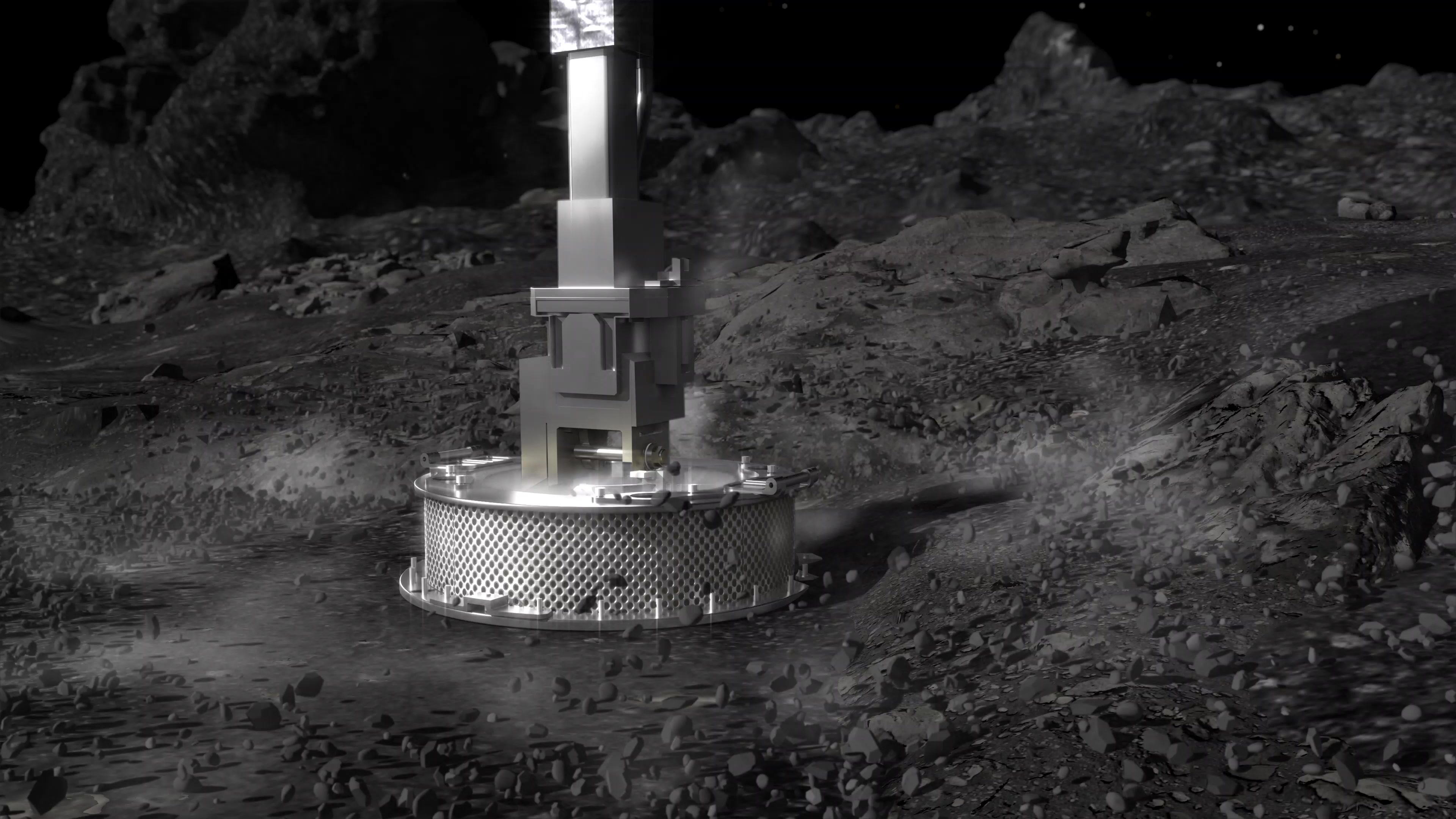OSIRIS-REx survived its touchdown on asteroid Bennu—now we wait to see if it got a sample

At 6:08 p.m. US Eastern Time on Tuesday, NASA’s OSIRIS-REx spacecraft finished a four-and-a-half-hour descent to the surface of asteroid Bennu, 200 million miles from Earth. Once there, it briefly made contact with the ground in an attempt to collect some rocky pebbles and dust before safely flying away. We won’t know if the sample collection was successful until later.
Why do we want a sample? Asteroids like Bennu are some of the oldest objects in the solar system—they are time capsules chock full of the same materials (such as organics and hydrated minerals) that eventually formed into planets like Earth. Studying these asteroids in depth could reveal new insights into how habitable worlds are made.
But in order to really understand the origin and evolution of these objects, we need to investigate them in laboratories here on Earth. The main goal of OSIRIS-REx has always been to bring back a sample of Bennu so we can take a closer look.
How did it happen? OSIRIS-REx touched down on a 52-foot-long site called Nightingale, within three feet of the landing target. The sample collection was made possible through a “touch-and-go” pogo method in which the spacecraft descended with a large 11-foot-long, one-foot-wide arm extended to the ground, making contact for about six seconds. During that time it fired off nitrogen gas that wafted small rocks and dust into a collection chamber at the head of the arm, with most of the collection occurring in the first three seconds. The head itself seems to have pushed down into the surface and crushed some material, which is expected to have helped the head collect more material. The spacecraft then flew back out to a safe distance away from the asteroid.
“Everything went just exactly perfect,” Dante Lauretta, the principal investigator for OSIRIS-REx at the University of Arizona, said on NASA TV after the maneuver. “We have overcome the amazing challenges that this asteroid has thrown at us, and the spacecraft appears to have operated flawlessly.”
The procedure was initially complicated by the fact that Bennu’s topography is different from what we once thought. When NASA first selected the asteroid for study, scientists thought it was covered in soft, sandy material like a beach, which would have been very easy to pick up. Instead, OSIRIS-REx quickly revealed Bennu to be a rocky surface covered in boulders and other hazards that would present new challenges for the sample collection. Luckily, OSIRIS-REx managed to avoid those dangers.
What’s next? Things aren’t over yet. The touch-and-go move went smoothly, but we still don’t know if OSIRIS-REx actually scooped up enough rock. NASA wants at least 60 grams, and there’s a 30% chance it failed to get that amount. Based on preliminary analysis, Lauretta is optimistic, saying the maneuver went "as good as we could have imagined it would." He and his team must run a few tests to know precisely how much material was collected, including a sample-mass measurement scheduled for Saturday. They expect to have a report ready by October 26. If things look good, OSIRIS-REx will stow the sample and depart Bennu in the spring, to deliver the samples to Earth in 2023. If not, the spacecraft has the ability to make two more sample collection attempts. Check back here later to see how it did.
This post has been updated with new information and media provided by NASA.
Deep Dive
Space
The search for extraterrestrial life is targeting Jupiter’s icy moon Europa
NASA’s Europa Clipper mission will travel to one of Jupiter's largest moons to look for evidence of conditions that could support life.
How to safely watch and photograph the total solar eclipse
The solar eclipse this Monday, April 8, will be visible to millions. Here’s how to make the most of your experience.
How scientists are using quantum squeezing to push the limits of their sensors
Fuzziness may rule the quantum realm, but it can be manipulated to our advantage.
Stay connected
Get the latest updates from
MIT Technology Review
Discover special offers, top stories, upcoming events, and more.